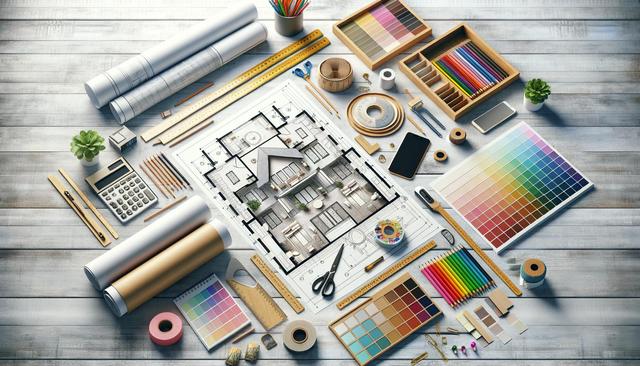The Growing Need for Digital Skills in Interior Design
As the interior design industry evolves, technology is becoming more integrated into every stage of the design process. From concept development to final presentations, digital tools are transforming how designers work. This shift has created a growing demand for professionals who are not only creative but also tech-savvy. Modern design firms increasingly seek individuals who can navigate software like SketchUp, AutoCAD, and Revit, and who understand the applications of VR (Virtual Reality), AR (Augmented Reality), and 3D printing. By enrolling in Interior Design Courses that focus on these technologies, learners can position themselves for high-tech job opportunities in this dynamic field.
Professionals who acquire these digital skills are better equipped to:
- Create immersive virtual walkthroughs for clients
- Collaborate effectively with architects and engineers
- Implement smart design solutions using IoT and sustainable practices
This integration of technology not only enhances creativity but also increases efficiency and accuracy, making it a valuable asset in any design project.
Exploring Online Platforms for Interior Design Education
There are numerous platforms offering Online Interior Design Courses with Certificate options, making quality education accessible from anywhere. Whether you’re a beginner or looking to upskill, platforms like Coursera, edX, and Skillshare offer a wide range of courses tailored to various experience levels and interests. These platforms often partner with universities or industry experts to deliver high-quality learning experiences.
Some popular topics covered in these Online Design Courses include:
- Introduction to interior design principles
- CAD and 3D modeling fundamentals
- Lighting and color theory
- Sustainable and smart interior design practices
- Designing for virtual and augmented environments
Many of these courses also include project-based learning, allowing students to build a portfolio that demonstrates their skills and creativity. Earning certificates upon completion can add credibility to your resume and LinkedIn profile, helping you stand out in a competitive job market.
Benefits of Learning Interior Design Online
One of the major advantages of taking Interior Design Courses online is the flexibility it offers. Students can learn at their own pace, fitting education around work or personal commitments. This makes it an ideal choice for career changers or those looking to enhance their existing skills without attending traditional classes.
Other key benefits include:
- Access to a global community of learners and professionals
- Opportunities to receive feedback from instructors and peers
- Resources like downloadable guides, templates, and practice projects
- Lower costs compared to in-person programs
Online learning can also foster self-discipline and time management skills, which are highly valued in professional settings. With the wide availability of Online Design Courses, learners can tailor their educational journey to match their goals and interests.
Incorporating Emerging Technologies in Design Education
As digital transformation continues to impact the design world, emerging technologies are becoming a core part of many Interior Design Courses. Understanding how to apply VR, AR, and 3D printing in design projects is no longer optional—it’s essential for staying relevant in the field.
Courses focusing on these technologies help students:
- Create realistic simulations of interior spaces
- Visualize designs before physical implementation
- Explore innovative materials and fabrication methods
- Design intelligent spaces using data-driven approaches
These skills are not only valuable in residential and commercial projects but also in specialized areas such as healthcare design, exhibit design, and retail environments. By engaging with these tools during their studies, learners gain a competitive edge and a deeper understanding of how technology can enhance aesthetic and functional outcomes.
Choosing the Right Course for Your Career Goals
Selecting an appropriate course depends on your current skill level, career aspirations, and the specific areas of interior design that interest you. If you’re new to the field, consider starting with foundational Online Design Courses that cover the basics of space planning, materials, and color theory. For more advanced learners, specialized courses in digital rendering or sustainable design practices may be more suitable.
When evaluating Online Interior Design Courses with Certificate options, consider the following:
- Course content and whether it aligns with your goals
- Instructor credentials and industry experience
- Availability of hands-on projects and peer reviews
- Flexibility in scheduling and pacing
- Recognition of the certificate by employers or industry bodies
Taking the time to research and compare courses will ensure that your investment in education leads to meaningful outcomes. Whether you aim to work in a design firm, start your own business, or specialize in a niche area, the right course can provide a strong foundation and open doors to new opportunities.
Conclusion: Building a Future in Digital Interior Design
Interior design is evolving rapidly, and professionals who embrace technology are well-positioned to thrive. Online Interior Design Courses with Certificate options offer a flexible and accessible way to gain the digital skills required in today’s market. By learning tools like AutoCAD, exploring VR and AR, and understanding smart design principles, aspiring designers can prepare for a wide range of roles in this creative industry. Whether you’re just starting out or seeking professional development, online learning offers a pathway to success in the high-tech world of interior design.

Leave a Reply